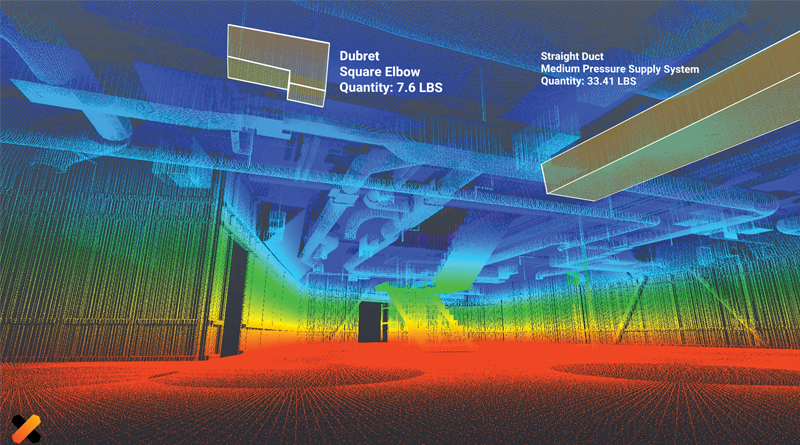It’s a Bird! It’s a Plane! It’s a Drone Doing Visual Inspections!
By Daedalus Howell
PALO ALTO, Calif. — For some, the concept of autonomous devices (or, to invoke common parlance, “drones”) bring to mind footage of our kids’ quadcopter-cam barnstorming the family barbecue. Palo Alto-based Doxel, developers of an an artificial intelligence and computer vision-based system for large-scale commercial construction projects, wants you to consider autonomous devices in an entirely different light — and not squinting into the sun at a jobsite. Instead, they suggest you view them from the bottom line.
Doxel uses autonomous devices to visually monitor every inch of a project — literally, roving or flying around the physical space — then feeds this data to its proprietary deep-learning algorithms. The algorithms then inspect the quality of installed work and measure the work in real time, which enables project managers to immediately react to inefficiencies.
 “For an industry that is notorious for cost overruns and delays, we see Doxel as the canary in the coalmine for construction projects,” said Lars Dalgaard, general partner at Andreessen Horowitz, a venture capital firm that invests in cutting-edge technologies, including Doxel.
“For an industry that is notorious for cost overruns and delays, we see Doxel as the canary in the coalmine for construction projects,” said Lars Dalgaard, general partner at Andreessen Horowitz, a venture capital firm that invests in cutting-edge technologies, including Doxel.
This could be good news to purveyors of large-scale construction projects such as university campuses. According to McKinsey & Company, a global management consulting firm, 98 percent of large-scale construction projects are delivered, on average, 80 percent over budget and 20 months behind schedule. The Construction Industry Institute echoes the observation citing that 10 percent of construction time is often spent fixing mistakes. Technologies like Doxel’s seek to head-off such overages.
“You can’t improve what you can’t measure. Without real-time visibility into quality and progress, managers simply can’t boost productivity,” said Doxel CEO and Co-Founder Saurabh Ladha.
The technology uses LIDAR (a surveying method by way of a pulsed laser that is named after a portmanteau of “light” and “radar”) and high-definition (HD) cameras mounted to an autonomous device to inspect a construction site’s interiors and exteriors. A proprietary artificial intelligence algorithm then processes this visual data and can deduce whether the work is up to snuff.
“Construction projects involve millions of similar-looking components, packed tightly together in a dark environment. It’s a Molotov cocktail of challenges for computer vision software,” said Doxel’s CTO and Co-Founder Robin Singh.
To wit, advances in computer vision software allow the artificial intelligence engine to perceive the world not just in two dimensions (like a flat photograph) but in three dimensions (like the human eye). Thereafter, algorithms can recognize and contextualize objects not just based on color, but also based on their shape, location and size. This information is also processed by a cloud-based dashboard then provides project managers with real-time, granular feedback on productivity and how it compares to actual expenditures of time and money. Moreover, errors can be detected immediately.
The result is that project managers can get real-time data on earned value for hundreds of thousands of line items in a project budget whilst reacting to issues in minutes rather than months.

